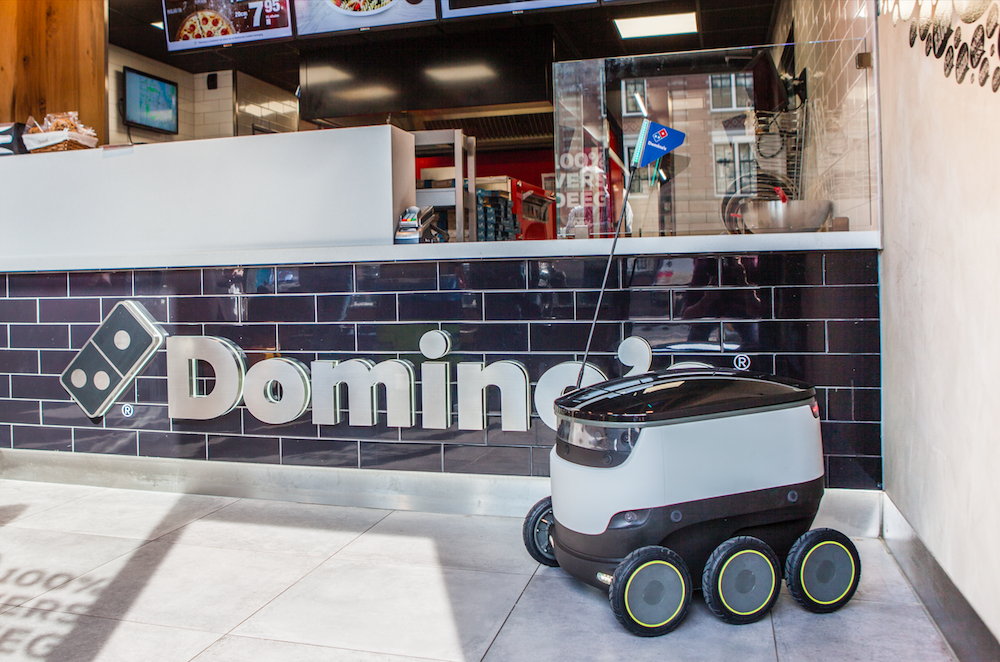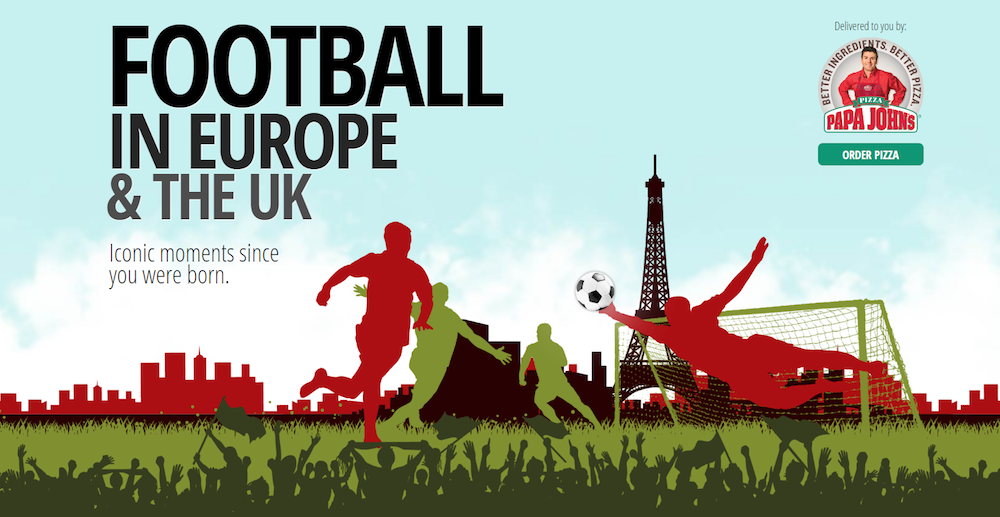(Editor’s note: At Dispatches, we’re all about capitalism. Love ’em or hate ’em, American restaurant franchises are among the most successful global companies.)
American fast-food and fast-casual chains are like rabbits: They reproduce so quickly they tend to overwhelm their native environments and have to go looking for greener pastures.
After 60 years, the fast-food category especially is pretty well sorted out, and in the U.S., the survivors are flush, looking for opportunities overseas.
I know … I spent years covering just about every sector of the U.S. restaurant industry in Louisville, Kentucky, the headquarters for the some of the largest fast-food and fast-casual chains in the world including Yum! Brands (KFC, Taco Bell, and Pizza Hut.)
What I learned is this … stable Europe is the obvious spot for growth whether you’re talking about McDonalds and Yum! Brands or less well-known regional chains such as Papa John’s International and Texas Roadhouse.
Think about it … we’re talking about a market of 700 million Europeans with massive disposable incomes. Or, you could – like Yum! Brands – roll the dice on 1.4 billion-plus Chinese, too many of whom are earning the equivalent of a buck an hour making iPhones.
If you’re an investor, there are always new opportunities to acquire American restaurant franchises if you, or your team, has operational experience.
In fact, Taco Bell just opened a very cool – though one-off – store in our HQ city of Eindhoven, with a menu and design flourishes you’d never in a million years see in the U.S. The store is owned by an individual investor, not a huge franchise group, so it can be done.
By the way, making money with a restaurant is way harder than it looks, with challenges ranging from fluctuating commodity prices to labor issues. So, successful chains require franchisees to bring money and expertise to the game.
And just because you know the American restaurant franchise game doesn’t mean you can show up in Europe and play in the big leagues.
A LOT is different here. First and foremost, the restaurant business in the U.S. is the real estate business, traffic counts and land for parking and multiple drive throughs. And turning a profit in the U.S. is easier because labor costs are usually lower.
In Europe, societal norms are turned upside down.
The rich live in city centers, the poor in suburbs. Europeans tend to prefer local cafés and restaurants, though that’s changing. Working at a chain restaurant is not considered a menial job, real estate is crazy expensive and you can forget about that drive-thru, which in the U.S. accounts for more than 60-percent of sales.
Still, since Colonel Harland Sanders opened the first Kentucky Fried Chicken in Corbin, Ky., franchisees have been pumping money with fast food. When I eat at the KFC here in Eindhoven, it’s always at capacity, and I’m going to guess that it has an annual turnover of more than 1,000 euros per square meter.
Yes, franchising is capital-intensive, and most chains require you to be what’s known in the U.S. as a Reg D accredited investor, with at least $1 million in net worth, or an income of at least $200,000 each year for the last two years. But the risk is far less than if you were starting the business from scratch.
Publicly traded American restaurant chains are required to file incredibly detailed earnings reports every quarter with every performance metric – the good and the bad – that you can possibly analyze. On top of that, financial publications such as the Wall Street Journal track their every move.
So, while past performance is not always an indicator of future success, at least you can know just about everything before you commit to a franchise.
Papa John’s franchising Europe
Pizza delivery chain Papa John’s International, based in my hometown of Louisville, Ky., went early into the United Kingdom, which makes sense. (English-speaking population and a developed supply chain with Dominos and others already there.)
I know founder John Schnatter a little, having dealt with him since 1995. (See below.) This chain reflects his driven, intense personality. If you’re going to be a franchisee, you’d better get ready to work (at least initially) a whole lotta hours seven days per week.
PJI is still expanding in the UK, where the chain now has more than 300 stores, with a goal of 600 units.
You can apply for a franchise here.
Good points: Founded in 1984, PJI has figured out the whole central commissary and commodities thing. Cheese, of course, is the issue, and fluctuating commodity prices have too often killed quarterly pizza profits for Papa John’s, Pizza Hut and others. Also, PJI was early and big in the digital game, with online ordering back in 2010.
Bad point: Papa John’s has virtually no brand recognition in Europe.
Major markets: PJI pushed into Madrid during the second quarter of 2016. PJ Espana Pizzerias S.L.., the master franchisee for this agreement, which is a fully owned subsidiary of Drake Enterprises AG, the Papa John’s franchisee in Chile.
In January 2016, the company executives announced they’re currently looking for potential franchisees in northern France, as well as in Poland, Czech Republic, and Belgium.
Who’s eligible: Papa John’s in the U.K., unlike in the U.S., doesn’t require operational experience. BUT, its materials emphasize that business experience is weighed when considering new franchisees.
Investment: Several factors such as site chosen and building costs, but typically an investment of between 170,000 pounds (195,000 euros) and 225,000 pounds (250,000 euros) of which 100,000 pounds (approx. 114,000 euros) should be in liquid funds.
The initial franchise agreement is for 10 years. Subject to lease and other considerations, that agreement is renewable by the franchisee, currently at no additional charge.
The franchisee fee is 18,500 pounds + VAT (approx. 21,066 euros + VAT) for each franchise unit. You will also be responsible for the rent, rates and utility costs of the store for the term of the franchise agreement.
True story: It’s 1995 and I’m a business reporter on the set of an advertising shoot in rural Kentucky for what turned out to be a very successful Papa John’s television campaign. Ad men being ad men, all the advertising executives are standing around in a circle swapping stories and trying to impress John. After about five minutes, he looks at me (no idea why) and says, “I don’t see how people bullshit this much. I don’t have that much to say.” He walks over to his Jeep Cherokee, gets in and locks the doors so no one can bother him.
The point is, Schnatter is all about business all the time. And his driven, kind of mirthless personality is reflected in his company, which is no-nonsense and demanding.
Texas Roadhouse franchising Europe
Here’s a successful Louisville-based steakhouse chain that used to have a Dutch CEO, G. J. Hart, yet never entered Europe. The problem likely is getting the same quality of steaks in Europe at prices comparable to the U.S.
But steakhouses are incredibly popular across Europe including in Germany, France, Belgium, and the Netherlands. Moreover, Texas Roadhouse could absolutely kill it here because they have a superior system.
How do I know? My daughter Lucy worked there a couple of summers ago.
When we go out to eat in the Netherlands, Lucy still can’t stop comparing front-of-house systems here (unfavorably) to Texas Roadhouse, where each store is like a well-oiled machine.
The funny thing is, international expansion has been on the minds of Texas Roadhouse executives for years.
Back in 2010, then-CEO Hart, founder Kent Taylor and CFO Scott Colosi told me they were expanding into the Middle East in a partnership with M.H. Alshaya Co., based in Kuwait City. And indeed, there are now Texas Roadhouses in Dubai, Kuwait City, and Qatar.
So why not Luxembourg City, Frankfurt, Amsterdam, and Brussels? I can’t think of a reason …
Good points: I talked with Kent a lot back when he started Texas Roadhouse in 1993, and I know he knows restaurant systems better than just about anyone. He literally eats and sleeps his business. He’s also a mega-hustler but is not as hard-edged as John Schnatter. (See below.)
Major markets: Texas Roadhouse has at least 450 restaurants in the U.S. and several in the Middle East. But that’s it. Of course, this is fast-casual, and per-diner tickets are a lot higher than fast-food … maybe $20 compared to maybe 7 euros at McDonald’s. Also, the look and systems are much more difficult and expensive to replicate. Finally, U.S. restaurants typically have to have partners who understand international markets.
Major complications you should know about now: Payroll.
Each Texas Roadhouse has in-house butchers who cut the steaks from slabs of beef. Managing partners at each Texas Roadhouse have an ownership interest. In exchange for 10 percent of the profits, managing partners are required to put down a $25,000 deposit and sign a five-year employment contract.
Finally, to get a franchise, you have to have serious operational experience.
Investment: Unlike Papa John’s, you’d better have a LOT of money to get a Texas Roadhouse franchise. At least $6 million in net worth, and $3 million of liquidity. Also, fast-casual chains generally require you to have a multi-restaurant plan, and the franchisor has an option to buy back the restaurants at the end of five years. Or just as the store is getting really profitable.
You can see all the requirements here.
True story: Kent Taylor has always been a funny guy. In 2010, I go to interview him, Hart and Colosi and I’ll own it … I’m not a funny guy. So, I’m sitting there in a deep discussion with Hart, who’s also not a ton of fun, about doing business in the Middle East when we look over at Kent, who’s got these huge fake buck teeth, smiling back at us.
Kent likes to have a good time, and he knows business is better when employees have a good time. Lucy really, really liked working there, and Texas Roadhouse has made GlassDoor’s “Best Place to Work” lists for years. So, this would be a natural for Europe.
If I had several million bucks burning a hole in my pocket, here are the other franchises I’d consider:
• Domino’s, based in Detroit. This 60-year-old pizza-delivery chain was at death’s door a decade ago. They sold the worst pizza in America by a mile. To top it all off, founder Tom Monahan had politicized his chain through his anti-abortion activism and his hard-line Roman Catholic beliefs, turning off the remaining customers who didn’t hate his pizza.
Then, in 2009, all that changed when the top executives said publicly that their pizza was horrible.
Now, the founder is gone. The pizza is great and they’re a force in Europe.
Domino’s is even developing delivery robots in Germany.
• Eataly, based in Turin. Okay, this isn’t an American chain. But if you know Chicago, you know this as the place you can never get in. Eatalys are multi-floor operations with multiple restaurants as well as gourmet groceries and high-end kitchen equipment. And most of the partners are Americans.
Oddly, Eataly started in Turin, Italy, then moved into the States. Now, Eataly is moving back into Europe with stores planned in Copenhagen and other cool cities.
The bad news: The owners do new locations as partnerships because the business is too capital intensive (about $20 million to open a store), complicated and un-franchisable. BUT, if you’re a super-wealthy expat, you might want to give them a call. Tell them Dispatches sent you.
Co-CEO of Dispatches Europe. A former military reporter, I'm a serial expat who has lived in France, Turkey, Germany and the Netherlands.


















